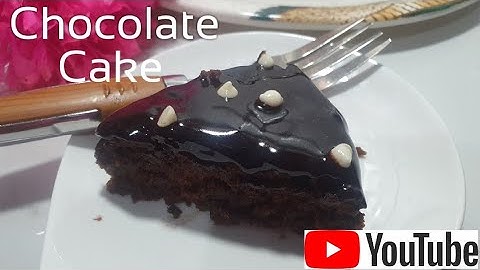How To Make grandma's holiday turkey cooked in roaster
Have you ever wished you could alleviate some Thanksgiving stress by freeing up space in your oven? Us too. Rather than finding alternative cooking methods for your sides and pies this year, try cooking the turkey on the counter with an electric roaster. Otherwise known as tabletop cookers, electric roasters allow you to free up critical real estate in the oven by roasting a turkey, chicken or pot roast right on your, you guessed it, countertop. Much like a second oven, electric
roasters are a great addition to any holiday meal plan and make cooking what can be the most time- and energy-consuming meal more seamless. If you’re cooking Thanksgiving dinner for the first time this year, having a reliable way to cook the turkey is a great place to start. But, even if you’re a seasoned pro in the kitchen, you’ll benefit from a shorter oven waitlist. These versatile cookers are the portable and efficient secret to an easier Thanksgiving dinner. Below, we’ve broken down
everything you need to know if you want to make Thanksgiving dinner a snap this year. Because electric roasters are smaller than a traditional oven, they’re able to heat up faster and retain heat longer, which helps cut down on cook time — a huge win if you’re juggling preparing multiple menu items the day of Thanksgiving. In fact, according to the folks at Oster,
their roaster ovens cut cooking time by approximately 30%, meaning you’re closer to enjoying dinner the moment you start cooking. Oster also claims that their roasters will also use 36% less energy when compared to a traditional oven. No matter what method you’re
using, remember that cook time will vary based on if your turkey is stuffed or unstuffed, and you should always make sure to use a thermometer to ensure that the cooked turkey has reached an internal temperature of at least 165 degrees. Another bonus of the electric roaster is the self-basting lid, which helps to continuously circulate moisture and therefore eliminates the need to open your oven, take the
turkey out and baste it every half hour. We all know that keeping the oven door closed helps to keep heat in, and the same goes for an electric roaster. By leaving the lid on and letting the machine baste the turkey, you prevent heat from escaping and help to keep the turkey cooking at consistent temperature. Pro tip: opt for an electric roaster with a windowed lid, that way you can peak at your turkey’s progress without taking the top off. With all this talk about heat, it’s important to note another bonus of a tabletop roaster: it won’t overheat your kitchen! Everyone knows that no matter how much you decorate the rest of the house, family tends to congregate in the kitchen, particularly during the holidays. Not only will an electric roaster cook your turkey faster, it won’t create any more heat in an already warm and stuffy room. How to Pick the Correct Roaster SizeWhen it comes to electric roaster size, it depends on the size of your turkey. Most electric roasters range in size from 16-quart-capacity to 22-quart-capacity. In general, a roaster can hold the weight of its capacity plus four pounds. Therefore, an 18-quart roaster can hold a 22-pound turkey, and a 20-quart roaster can hold a 24-pound turkey. However, all electric roasters aren’t created equally, so make sure to check your specific brand of roaster for their recommended size guide. If you’re worried about the size of your turkey, opt for an electric roaster with a domed lid. The domed lid helps to add extra height for those particularly robust turkeys and creates more space for air to circulate. What Else Can You Use it For?The short answer: anything. Whatever food you would cook in your traditional oven, you can cook in an electric roaster. These gadgets are great for baking, steaming, roasting and even braising. Heck, you can even make a cheesecake in one. Our favorite use? Serving! With their gentle warming settings, electric roasters can act as the star of your buffet station by keeping foods warm and ready to eat. Timing is crucial to serving a big holiday dinner, and these handy cookers can help you pace your day from start to finish. How many hours does it take to cook a turkey in a roaster?Rub the turkey with the butter and season with salt and pepper. Cover the roaster and cook at 400 degrees for 30 minutes. Lower the heat to 325 degrees and cook for 3 ½ – 4 hours until a thermometer reads 165 degrees in the thickest part of the turkey thigh.
Do you put water in the roaster when cooking a turkey?"Often consumers will inquire about adding water to the bottom of their roasting pans. We do not recommend adding water to the bottom of the pan. Cooking a turkey with steam is a moist heat-cook method and is acceptable, sure, but is not the preferred method for cooking your turkey."
What is the best temperature to cook a turkey in a roaster?The best temperature to cook a turkey in a roaster oven is 325F. I start my turkey at the highest possible temperature for about 30 minutes to brown and start to crisp the skin, then turn it down to 325F for the remainder of the cooking time.
How long does a 24 lb turkey take to cook in a roaster?You'll want to plan about 8-10 minutes per pound for an unstuffed bird at 325º Fahrenheit. You should always read your instruction manual because each roaster may be different.
|

Advertising
LATEST NEWS
Advertising
Populer
Advertising
About

Copyright © 2024 en.frojeostern Inc.













